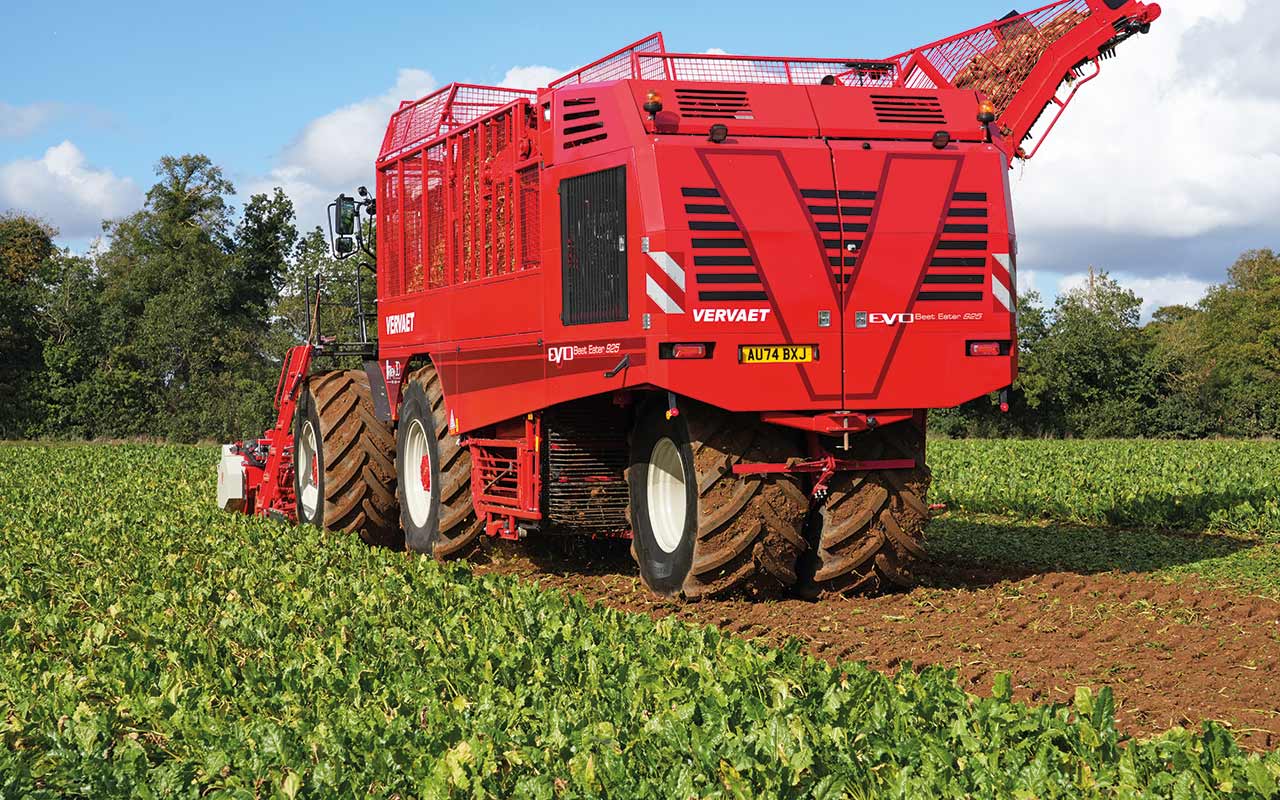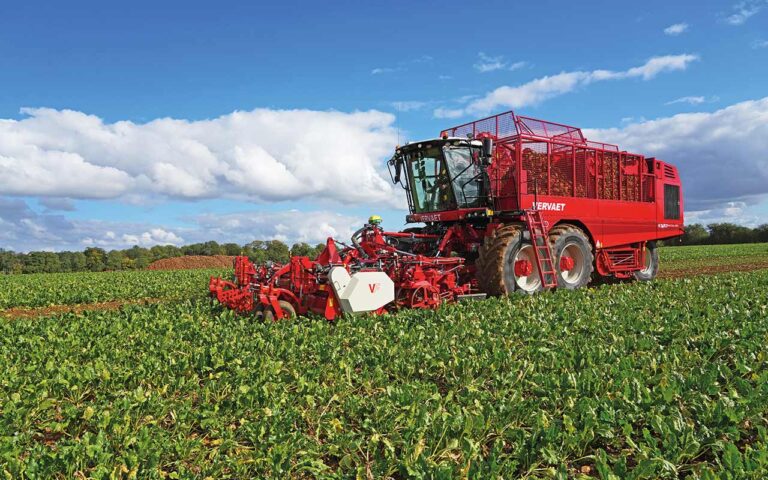JP Plowright took delivery of its second nine-row Beet Eater 925 Evo this year, replacing the unit
it had purchased in 2018 from J Riley Beet Harvesters.
This works alongside a six-row Q-616 machine, said to be the best-selling beet harvester model in the UK.
Edward Plowright says that while the Vervaet models have always impressed them, it has been the excellent backup from J Riley that has ensured the company stayed with the brand.
“We’ve purchased beet harvesters from [founder and former managing director] Jeremy Riley since he was selling the Moreau brand in the 1970s,” he says.
“With every machine we’ve had from the company, we’ve been able to work knowing that if anything goes wrong, they will get us up and running again as soon as possible.”
He adds that the Vervaet machines have proven their worth in the field as well. The previous 925 machine covered just over 40ha in a single day, lifting more than 3,300t of sugar beet.
“That was an exception, with two large fields to go at, but when the going is good, we regularly lift in excess of 25ha each day.”

Varied soil types
One of the key considerations for the company is choosing a machine that can handle the varied soil types across Nottinghamshire.
Edward says they work in everything from light sand through to heavy clay, and in fields where the stones are so big you would struggle to pick them up by hand.
“The Vervaet machines have always managed to handle the difficult conditions,” he says. “We’ve had some other brands out on hire in tricky seasons, but the Vervaet always managed to outpace them.”
Looking at specifications of the new machine, the 925 Evo is powered by a Mercedes-Benz MTU engine, producing 643hp and capable of running the machine at full capacity at 1,200- 1,400rpm.
At the front, the Combi 2 topper runs at 1,200rpm ahead of the walking shares, which individually follow ground contours.
Lifted beet moves over three front turbines, said to remove about 50% of soil, with further stepless-adjustment turbines finishing the cleaning process before the crop lands in the 25t bunker.
The more compact Q-series is powered by a 530hp DAF Paccar unit, running at 1,100-1,350rpm.
With a four-wheel running gear, it is said to reduce compaction by keeping a single wheel to each track.
It also features a Combi 2 topper, followed by individually adjustable walking shares, and can be fitted with up to six cleaning turbines to ensure only the beet reaches the 16t bunker.
The chase
A novel approach from J Riley is the option to purchase beet chasers, adapted from refurbished harvesting units.
The benefit of using one of these, according to the company, is that its capacity matches that of the harvester, and all the running gear is designed to deal with the difficult conditions associated with the beet season.
The Plowrights use two chasers, with a previous six-row machine working alongside the Q-series, and their old 925 also having been converted.
“It’s a lifesaver when conditions are wet,” Edward explains. “During these past two seasons, having the chasers really helped us keep moving where tractors and trailers would have gotten stuck.”
When it comes to running beet harvesters, he concludes that if J Riley continues to sell and service the Vervaet range, he doesn’t believe his company will look elsewhere.
“Our current nine-row was the first we didn’t buy from Jeremy, but we’ve received the same service from new owner Matt Carse.”


